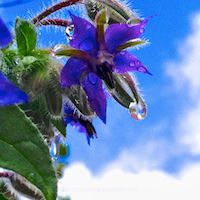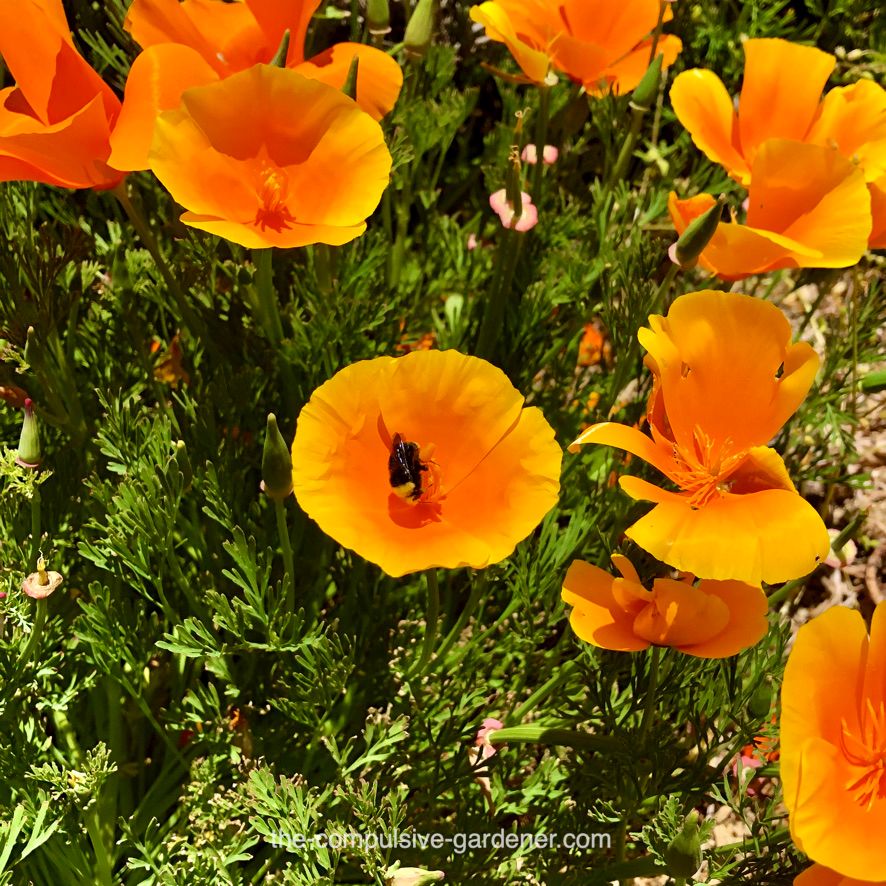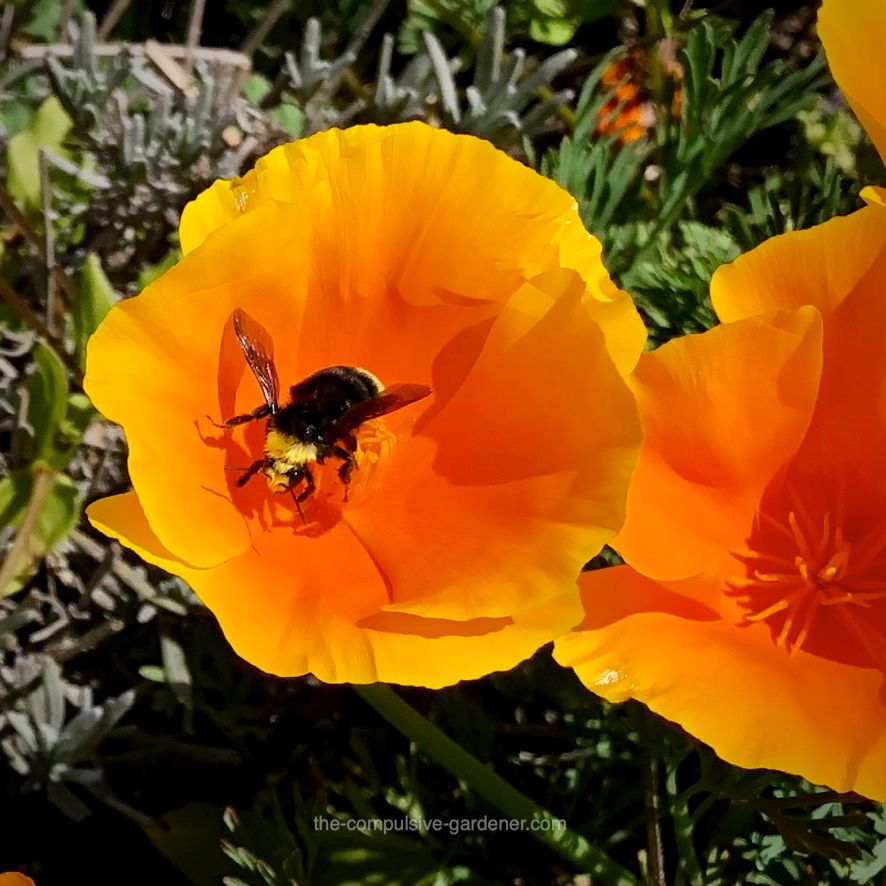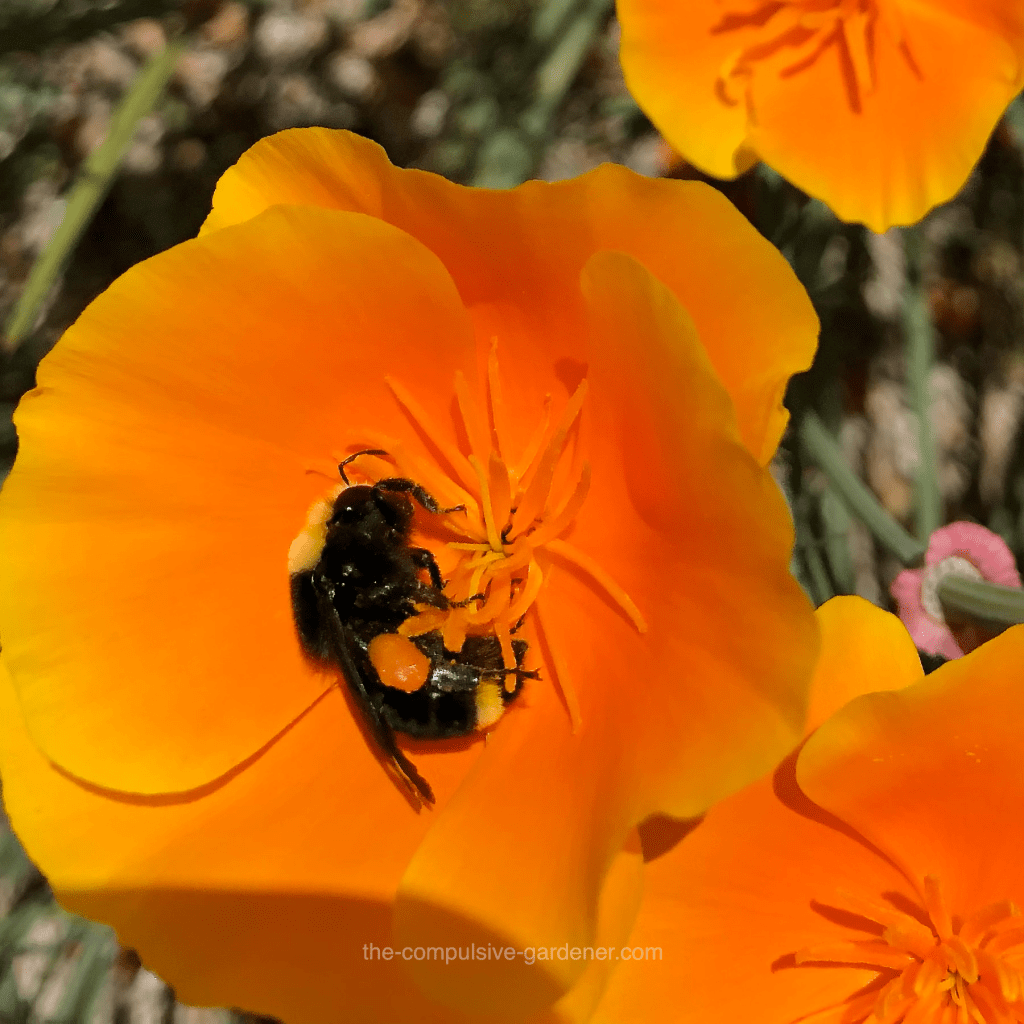a chat over the garden fence
Sowing A Wildflower Meadow

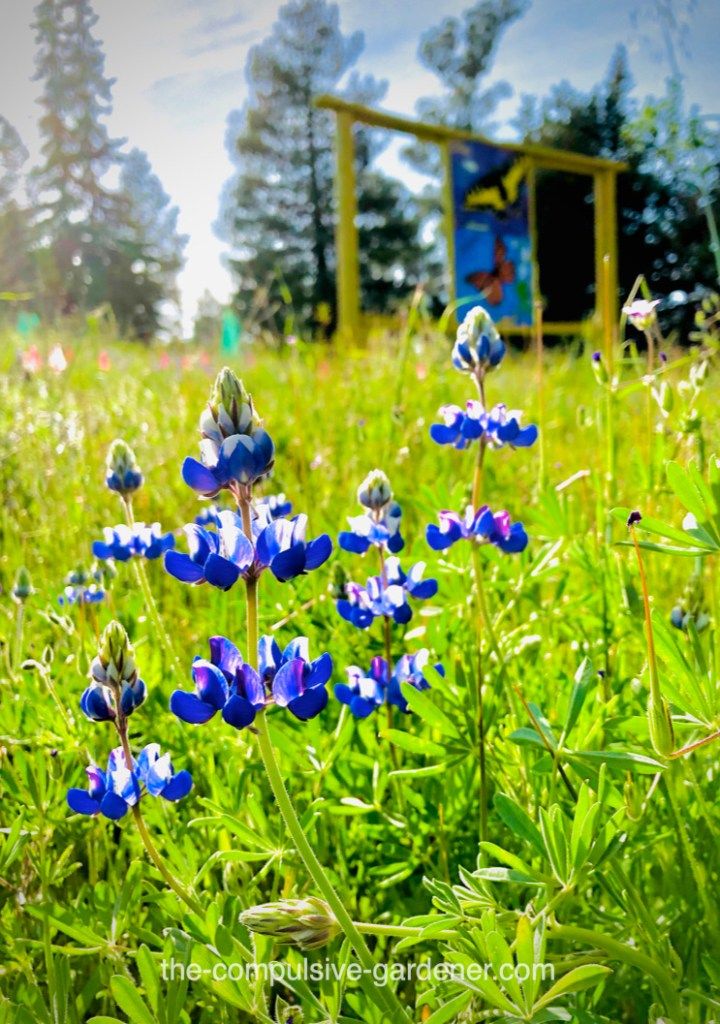
Actual moisture has fallen from the sky, reminding us drought-parched locals what rain is. I’ve dusted off my rain boots and slicker in eager anticipation of winter wetness.

Besides leaving my car out of the garage in hopes of a free wash, at the beginning of the (hopefully) rainy season here in Sonoma County, California, I also start sowing wildflower seed in the field. I posted about this elsewhere online, and the enthusiastic response inspired me to write about it here.
Sow Your Native Wildflower Meadow In Winter to Enjoy the Blooms In Spring
During the first rains of fall or winter is the time to broadcast those native wildflower seeds like California poppies!
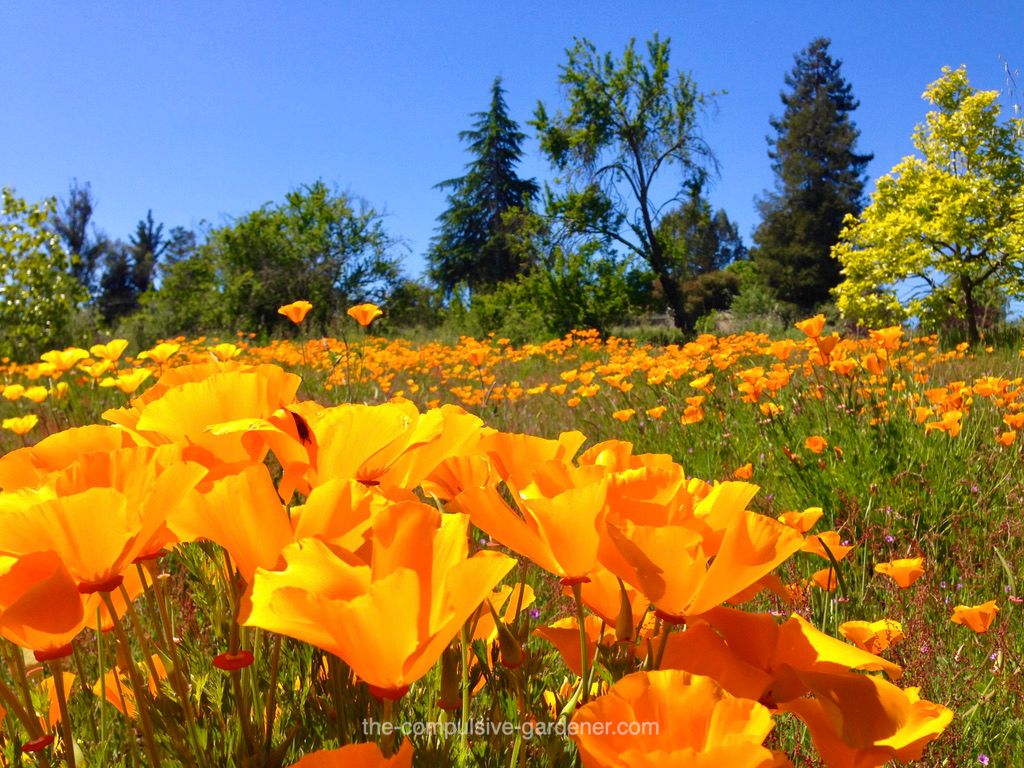
Every winter during the rainy season (if there is one!), I broadcast some California poppies (Eschscholzia californica) and arroyo lupine (Lupinus succulentus) seeds up on our hill. Those are the wildflowers I’ve had the most luck planting and growing. This year I’m trying to establish some other native wildflowers as well. To be clear, I’m not an expert–just a gardener that has been doing this for many years and it seems to work for me in my location, so I’m sharing how I plant and care for our wildflower meadow, in case it is helpful to anyone.
When Is the Best Time to Plant California Wildflowers? It’s a delicate balance
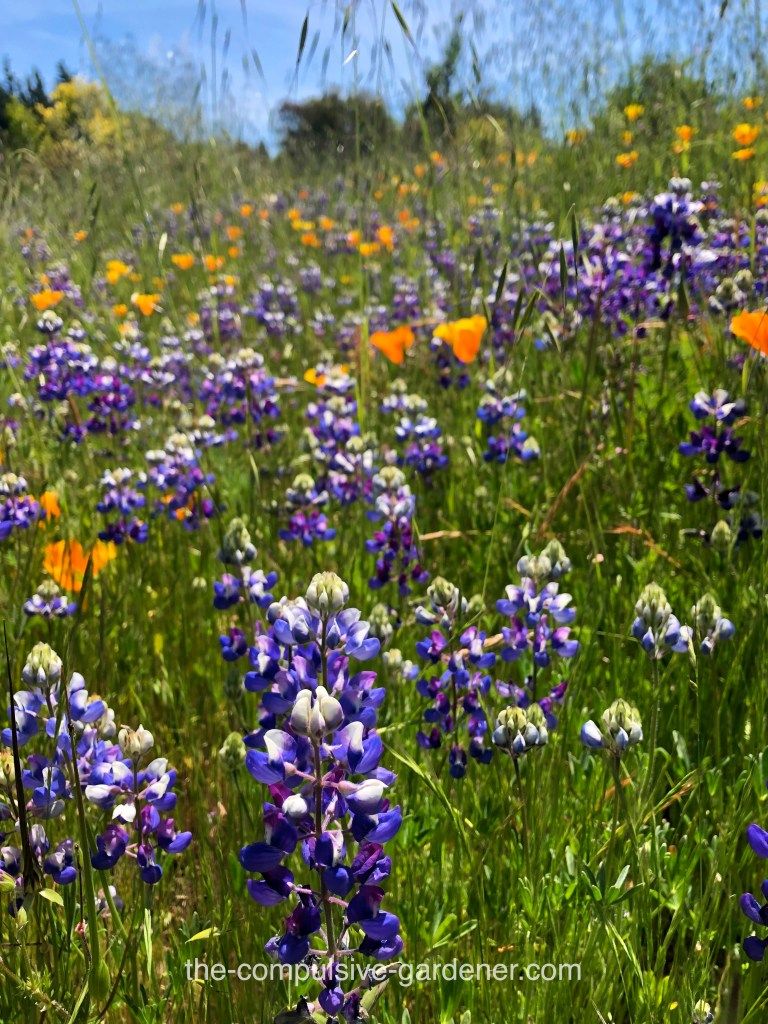
For me, getting the timing right has been crucial.
Ideally, I scatter the native California poppy and lupine wildflower seeds during the first heavy downpour of the rainy season. It’s even better if it’s the first day of a multi-day rainy forecast.
This year, since the ground was so parched with the drought, I waited until after the first rain moistened the soil a bit, and broadcasted seeds during the second rain.
My goal is to have the seeds immediately watered and washed into little soil crevices. Scattering seed during a heavy rain also keeps the birds from immediately swooping down to feast on them. Of course, these conditions are rarely present all at once and some years are more successful than others. I often divide the seeds into two, so I can hedge my bets and sow a second time during the next heavy rain.
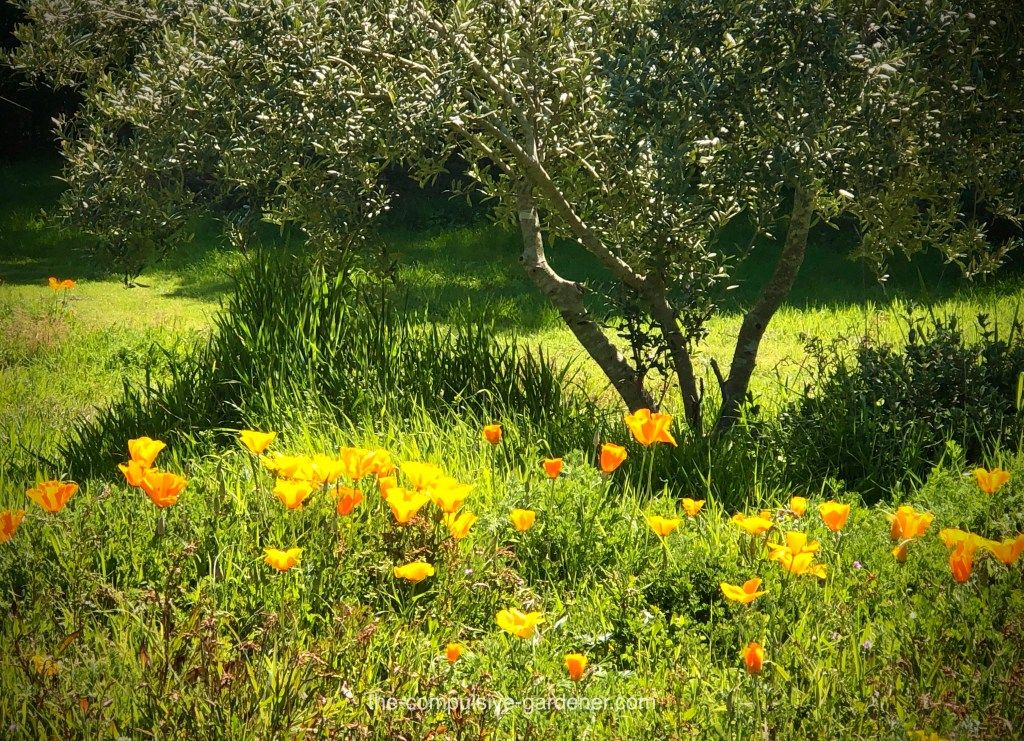
Sowing the wildflower seeds during the first rains also means they have a chance to compete with those nonnative field grasses–which are very vigorous, as you probably know. The grasses, upon the first precipitation of winter, immediately sprout and grow rapidly. If I cast wildflowers seeds after those grasses are already thickly covering the ground, the seeds will just land on their leaves or be too far behind in growth to get established.
Do You Need to Prep the Soil for Wildflower Seeds?

I don’t. The native soil in my location is sandy with low organic matter–except for a patch of clay that was apparently imported for the leach field area.
At the end of the dry, Mediterranean-climate summer, the uncultivated field on our hill is barren and pock-marked with gopher mounds–looking a bit like a moonscape. All grasses have died back and much of the sandy soil is visible.
Because there is basically bare soil already, I don’t prep the soil at all. I just broadcast the seeds in the best conditions I can, as above, and let nature do the rest.
Heavy clay soils or areas with a lot of existing vegetation (like an irrigated garden) may require more prep. See Additional Resources below.
Which Wildflowers to Grow?

Research I found said California poppies grow best in sandy, poor soil and arroyo lupines prefer "moist clay or heavy soils in full sun". (SFGate; CalScape) This is probably why I’ve noticed the lupines doing better in the clayey leach field area and the poppies doing better in the sandy soil.
So if you are having trouble establishing certain wildflowers, you might look through the resources below to discover which ones are best for your soil type, and try those.
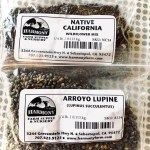
As needed, I buy seeds in bulk packages from Harmony Farm Supply. Other people said they like LeBallister’s in Santa Rosa.
I’ve started saving some of my own seeds too. See my post on saving seed from California poppies, here.
Again, after sowing the wildflower seeds, the rain and nature does the rest. These are native wildflowers with a spring show, and need no further input from me. They are very pretty in April and May when they bloom in abundance and are visited by those fun, lumbering, native bumblebees.
Habitat for Native Bees–California Poppies Provide Pollen But Not Nectar
And speaking of those fun bumblebees, almost all my poppy photos have bumblebees in them! Other bees and some beetles also partake of the pollen of California poppies. (UC-ANR) It’s wonderful to watch these pollinators enjoying themselves.
In writing this, I became curious if the California poppies also provide habitat for butterflies. I found some conflicting information while researching, so I asked a native plant forum. Though we all had observed bees and bumblebees on California poppies, we couldn’t recall seeing butterflies actively engaged with them other than the odd visit.
What I learned is that poppies have pollen, but not nectar. So the bees love them, but whether they also support butterflies is, as yet, unclear to me.
I found cited evidence of some butterflies being seen on CA poppies (see this CalScape page). But butterflies need nectar for the adult butterfly to sup on, and poppies have none. The plant itself could be a host plant–eaten by caterpillars–but I’ve never observed this and can’t find any citation of it.
If you have scientific proof that they are caterpillar host plants, please include info and source in the comments. I’d love to know! I certainly plan to observe them more closely in the future. There are, of course, many wildflowers that are important to butterfly habitat, like native milkweed. I will share more about that another time when discussing the butterfly garden.
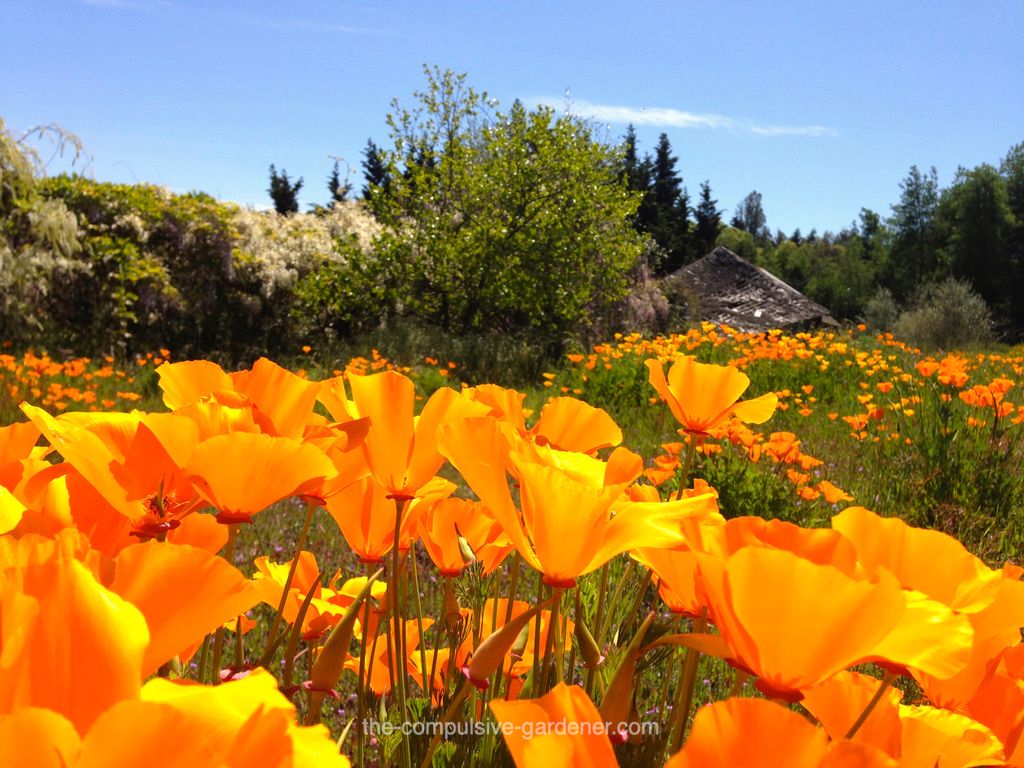
Balancing a Self-seeding Wildflower Field and Beneficial Insect Habitat With Wildfire Safety

Disclaimer: I refer you to your local wildfire safety resources, like FireSafe Sonoma County, for official safety guidelines for vegetation. With increasing wildfire danger but also increasing loss of native habitat, gardeners are called upon to do the best they can to work with ever more challenging and often contradictory goals. The following is what I am currently doing but you should be advised by your local wildfire safety resources.
To encourage a self-sustaining wildflower meadow, I try to let the California poppies and arroyo lupines reseed themselves, which means leaving the field unmown until they form mature seed heads. This later growth is a bit rank-looking, since the grasses and weeds grow in tandem with the wildflowers. This look isn’t very appealing and might be a deal-breaker for some people, which I can understand. But in addition to creating a self-sustaining, locally-adapted wildflower meadow, it also provides a good habitat for ladybugs and other beneficial insects to get well established during the spring and early summer.
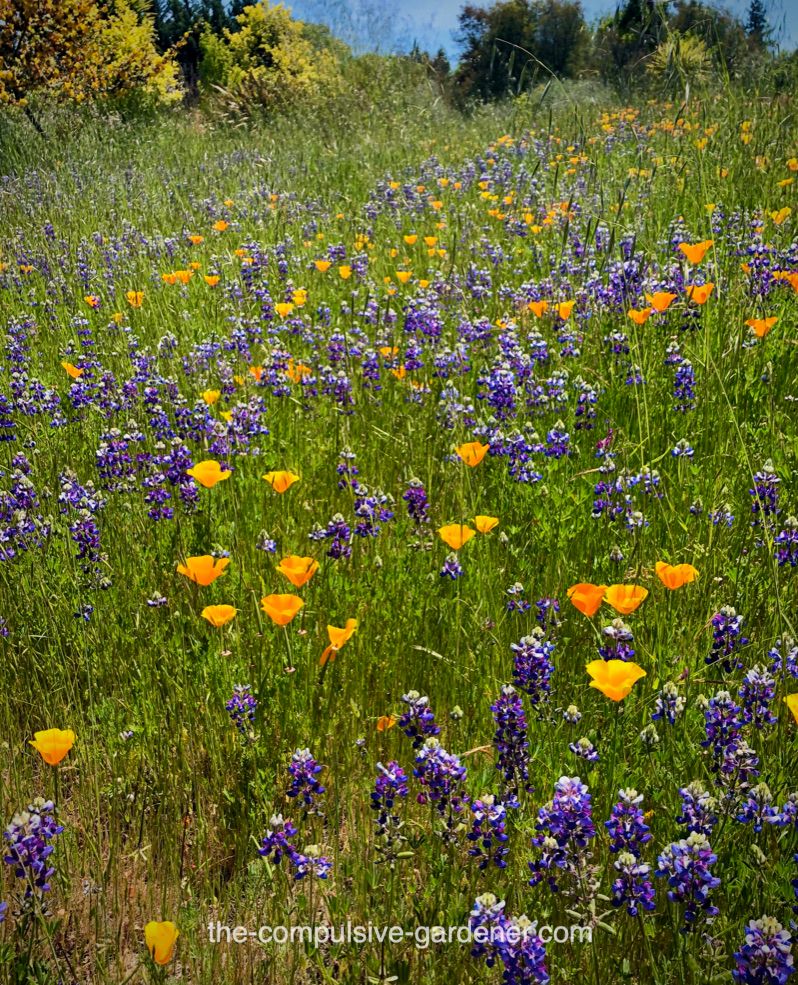
I do, however, keep all areas mown within a fire-safe perimeter around neighbors and buildings at all times.
I do not mow the wildflower meadow area until just before July 4th. Some of the poppies and lupines have seeded by then, but the main reason is for wildfire safety. Every year there are the inevitable illegal bottle-rockets set off in our rural area during that holiday and I worry about sparks landing in a dry field with highly flammable dry vegetation. So everything is mowed before July. Some of the poppies re-bloom on shorter stalks after mowing, but mostly the field goes summer-dormant at that point.
You might be wondering why I scatter more seed each winter since the wildflowers have re-seeded themselves. A few reasons. One, I have to mow before all of them have re-seeded themselves. Two, birds and rodents eat the seeds, and so by wintertime, many seeds may have been consumed. Three, the non-native grasses are more vigorous than the native wildflowers and I want to keep a strong wildflower density. Ideally, I would love to control the non-native grasses and replant with the native perennial ones, but I can only manage so much.
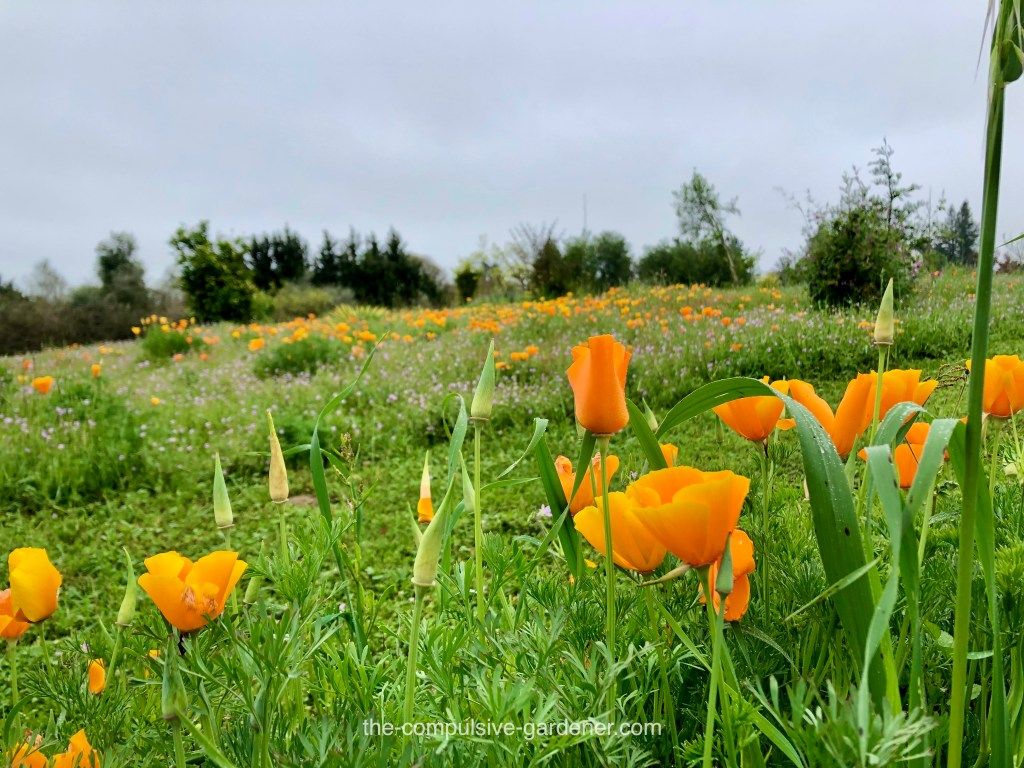
Additional Resources

For more on growing wildflowers, there is much valuable information to be found at the Xerces Society, including an excellent PDF of establishing a wildflower meadow that includes other strategies than what I’ve described. The Theodore Payne Foundation also offers a PDF on sowing California native wildflowers.
Besides the California poppies and arroyo lupines, here is a list of pollinator-friendly plants for California habitat gardens.
Larner Seeds suggests some wildflower color-combinations at the bottom of this article on growing wildflowers.
And this site has some lovely photographs of a variety of wildflowers in a user-friendly format.
About our native bees–a link provided by CS of the native plant forum.
Article on CA poppies providing pollen, not nectar, for bees–from MS of the native plant forum.
I would enjoy hearing from other gardeners about how and when you sow your wildflowers, what has worked or not worked for you. If you would like to suggest other resources for this page, feel free to comment or write to me at the email on my Contact page. We can all help one another create more vibrant wildflower habitat gardens.
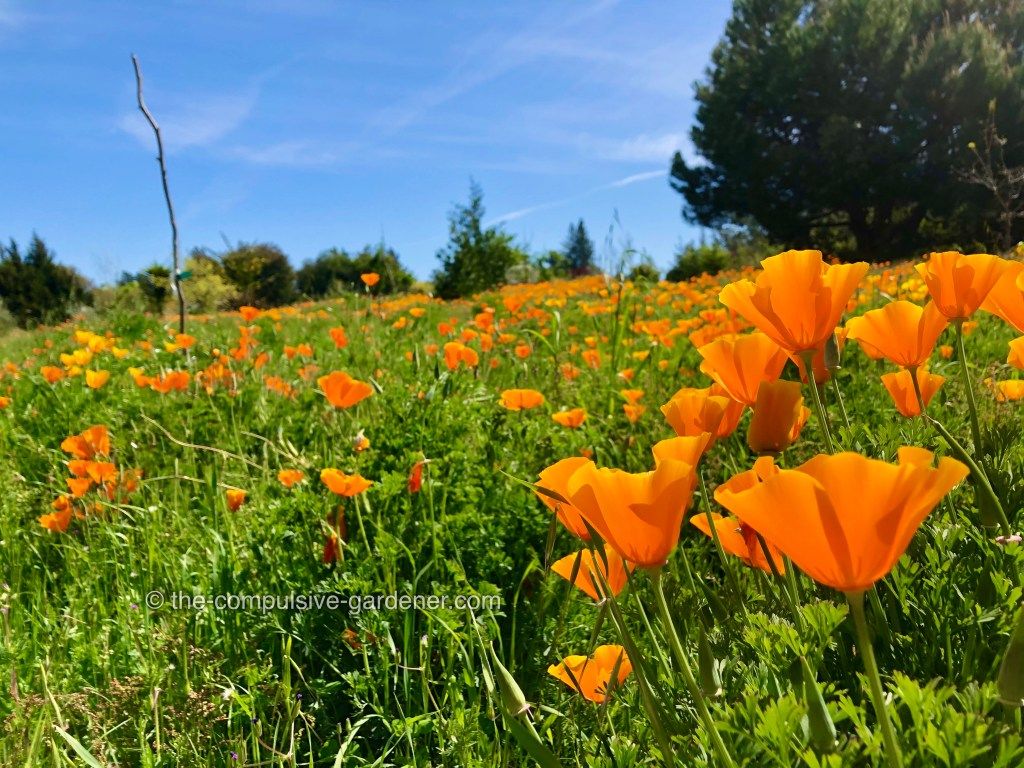
Post navigation
10 thoughts on "Sowing A Wildflower Meadow"
-
After 5 months with hardly any precipitation the first rain has arrived here too and it’ll stay for a while no doubt. I love the pic with the shed in the rain! I love Eschscholzia and dream of seeing them in the wild some day. Until then I enjoy little patches in my own garden.
-
-
-
-
-
-
An interesting read Lisa and beautifully illustrated, your meadow looks lovely! Clay can be tricky for wildflowers as you say, we are on heavy fertile clay here – clover has colonised our lawn so I basically let this grow as a mini meadow and the bees do love it.
-
